In a bar, each customer deserves to feel at ease, enjoying excellent visibility and a refined atmosphere, outlined by the exclusive presence of creative designer lamps.
The entrance, bar counter, tables, bathroom and work stations deserve to be effectively illuminated, with lighting solutions that have an original decorative potential.
To guide you in the selection of the most suitable lamps for the bar you are dealing with and their correct positioning, we have compiled a small guide containing all the key steps for flawless lighting design.
Bar lighting: 10 steps for correctly illuminating a bar
To make the best choice of lamps and then position them correctly in a bar, it is a good idea to keep in mind these 10 steps, which are essential for creating a state of the art lighting design project:
- Think about the atmosphere you want to create;
- Observe the environment and consider the layout of the entire location;
- Pay attention to natural light sources;
- Consider the different areas of the bar and calculate how many lamps are needed for the project;
- Evaluate which models may be best suited to the client's functional and aesthetic needs;
- Take care of the ambient lighting;
- Switch to task area lighting;
- Complete the project by adding accent lighting;
- Opt for dimmable solutions;
- Play with lights of different temperatures and intensities.
Let’s continue in stages.

Alibabig
1. Think about the atmosphere you want to create
Do you want to create a rarefied and intimate atmosphere through lighting, ideal for a small bar, or do you want to recreate an energetic and stimulating mood, perfect for a lounge area for the nightlife?
To create a final composition with a great impact, it is a good idea to start thinking about the atmosphere that the customer wants to create in their bar. The latter will determine the personality of the place and the consequent clientele.
The style of the designer lamps must be in tune with the climate of the bar.
2. Observe the environment and consider the layout of the entire location
Secondly, it is essential to observe the environment and take into consideration the conformation in terms of space.
For example, if we consider the height of the ceiling, it is obvious that a bar with a high ceiling will have different functional requirements than a bar with a low ceiling.
As well as an extended perimeter compared to a more intimate location. Or even a small bar with a few windows compared to a fairly large room.
Each location has its own lamp model, which is why respecting this second step is decisive.

Kimono
3. Pay attention to natural light sources
To achieve a flawless decorative lighting project, it is necessary to pay attention to the natural light sources present in the room: windows, small portholes, balconies, doors, etc.
These are potential points of access to sunlight, which does not imply a disadvantage; on the contrary, a bright room is always pleasant to attend.
The trick is knowing how to measure the light, opting for artificial lighting sources that will not make the atmosphere heavy. A bar that already enjoys natural light does not need many lamps, so don't forget this third point.
4. Consider the different areas of the bar and calculate how many lamps are needed for the project
After taking note of the main access points of natural light, it is good to look at the task areas inside the room and make an accurate calculation of the lamps needed to illuminate them.
In this design phase, you will begin to evaluate which lamps are best suited to lighting the bar tables, cash register, entrance and bathroom, to make a style statement in each area.
To give greater prominence to the counter, for example, you could opt for a cascade of suspension lamps in transparent straw-coloured glass or lamps with a structure in white ceramic thus creating a composition of great visual impact.
Or you could opt for another suspended model with an elongated white ceramic lampshade. In this way, you will give the counter directional light oriented towards the worktop, guaranteeing clear and uniform lighting.
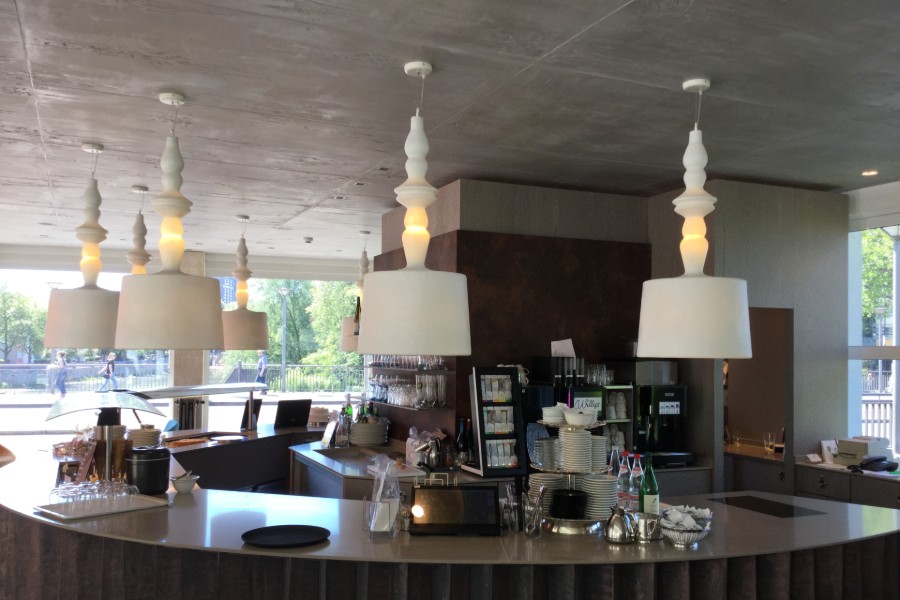
Alì e Babà
5. Evaluate which models may be best suited to the customer's functional and aesthetic needs
It supports the functional and stylistic needs of the client.
Try to accompany your client in the selection of the most suitable lamps for the realisation of the project and their tastes, making sure they are able to offer technical and aesthetic qualities in a single solution.
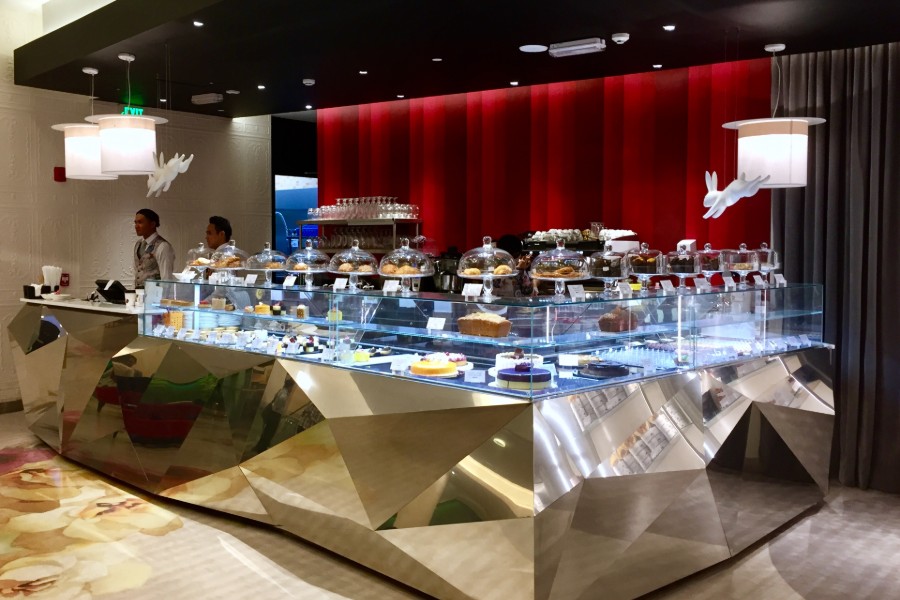
Wow
6. Take care of the ambient lighting
Ambient lighting plays a key role in the complex lighting of the bar since, in fact, it outlines the general atmosphere. Therefore, it is essential to opt for lighting design solutions that can immediately transmit the character of the room.
If you are working on the design of an informal bar with an urban taste, you could opt for industrial-style lamps, perhaps preferring solutions with a minimal design consisting of a micro-perforated tubular and a metal joint.
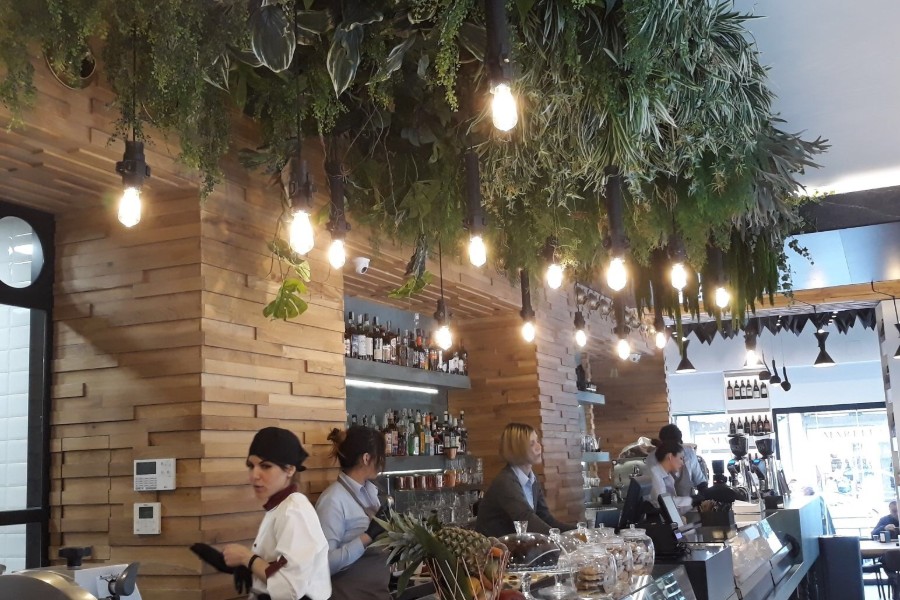
Nando
A perfect material combination that guarantees efficient lighting and maximum aesthetic return.
This type of lamp, installed singularly or in a composition above the bar counter, provides the entire area with functional light points and gives a new and sophisticated look to the bar.
You could also combine them with other lamps with creative design, such as important chandeliers or ceiling lamps with clean and essential aesthetics: imposing and sinuous shape, but a silhouette without any excess.
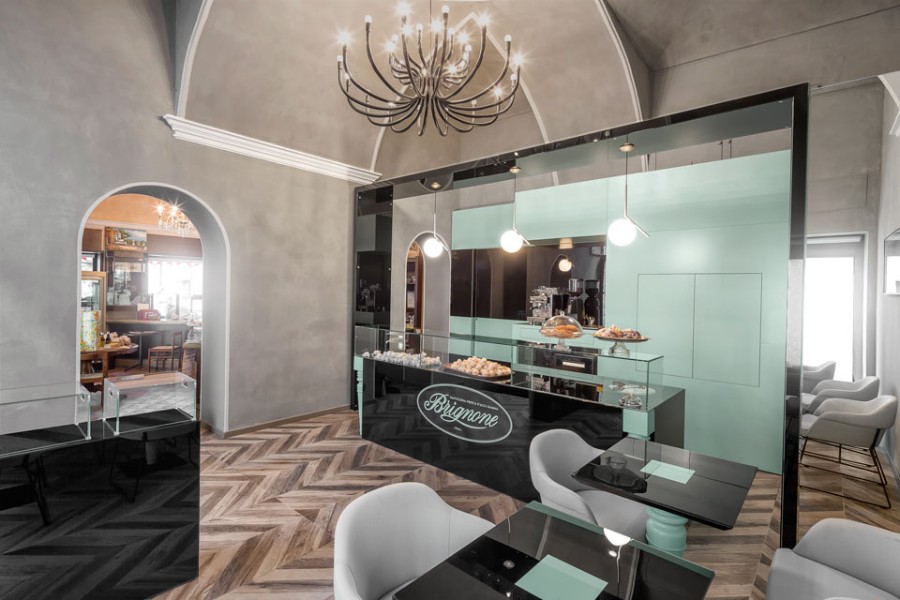
Snoob
If, on the other hand, you are designing a more refined and intimate bar, you might be interested in the luminous and decorative potential of the bell-shaped suspension in white plaster with the metal mesh at the base, as well as the solutions in transparent straw-coloured glass with the unmistakable vintage charm.
Suspended at the entrance, these lamps will provide incredible magic, enriching one of the main areas of the room with innate ornamental ability.
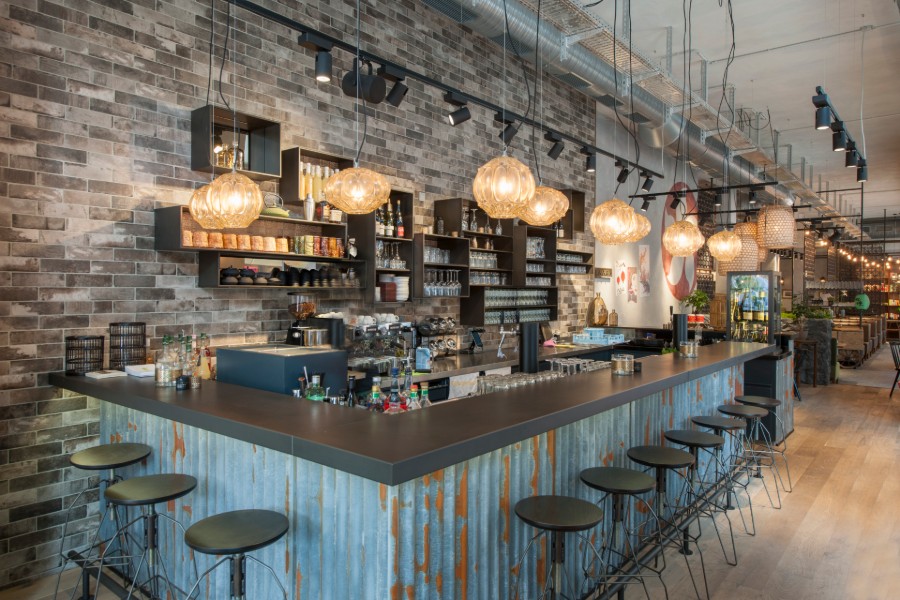
Ginger
7. Switch to task area lighting
The task areas need functional, clear and homogeneous light. But even in this case, it is possible to dare, by selecting lamps with an attractive design, made with plastic and unusual materials.
Specifically, white fibreglass lanterns with a lampshade that has a linear line and fascinating presence, clear and diffused lighting, ideal above the tables in the rooms or above small private rooms and sitting areas.
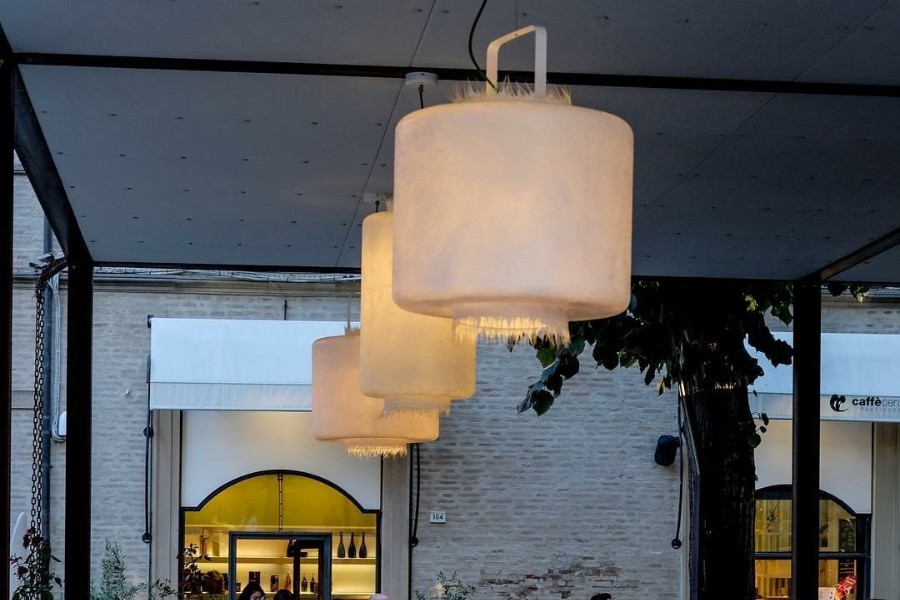
Kimono
Or you could opt for suspensions with a copper green coloured ceramic body, extremely versatile nuances and evocative forms in any context of furnishing and bar environment, especially in the dining room or along passageways.
8. Complete the project by adding accent lighting
To give a final touch to the entire lighting complex, place small sources of accent lighting along the walls or next to paintings, ornamental details and design elements.
Ideal for this purpose, they could be standard lamps or appliqués in white technopolymer with a geometric design and suspension lamps.
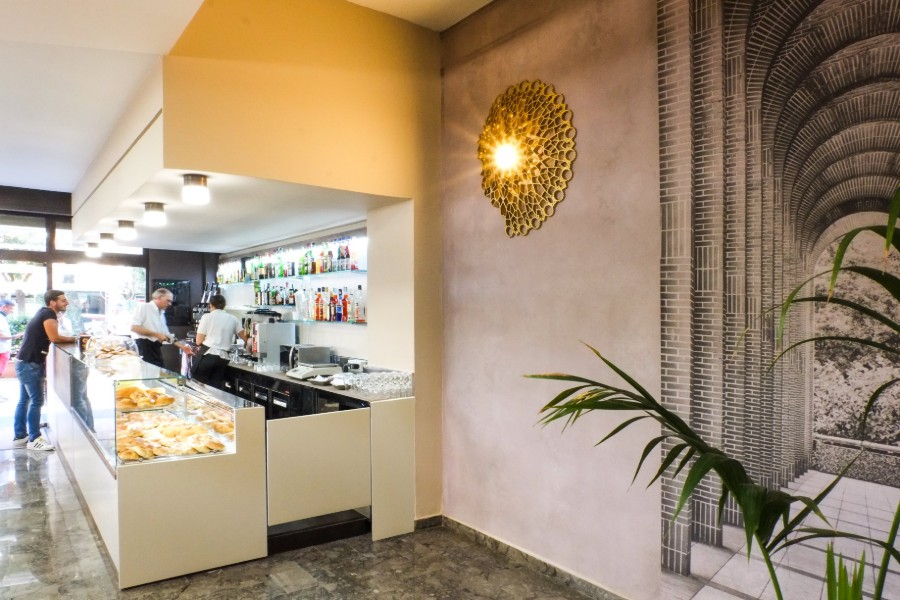
Notredame
If you decide to select the latter, we recommend opting for models with a white metal wireframe. The silhouette of
these lamps brings back a retro style that is always up-to-date and versatile, suitable for any venue.
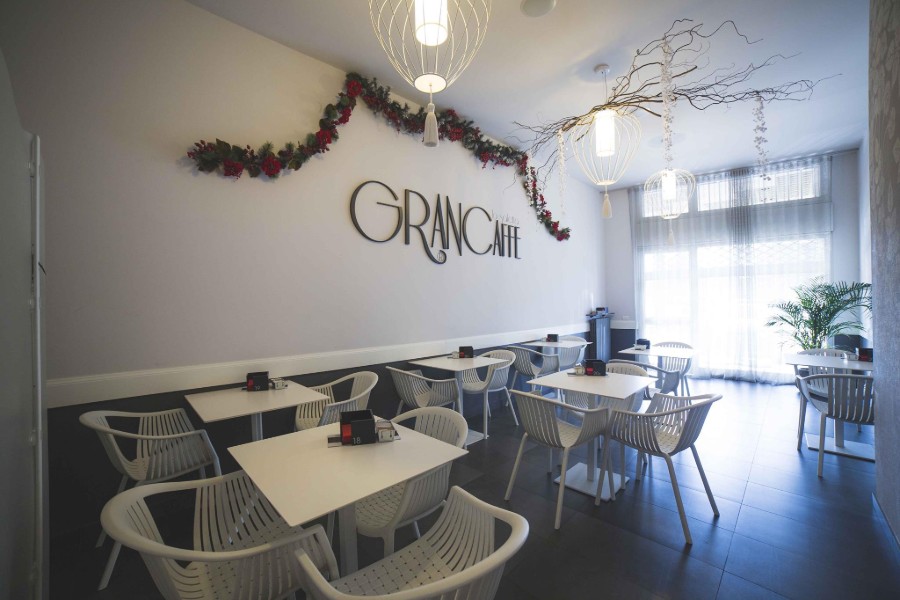
Cell
9. Opt for dimmable solutions
The lamps equipped with dimmers are extremely versatile in any context and allow those who use them to be able to adjust the luminous intensity of the light sources to their liking.
Opt for dimmable solutions so you can create a different and always pleasant climate every time.
10. Play with lights of different temperatures and intensities
Playing with lights of different temperatures and intensities will not only contribute to creating a special atmosphere in the bar but will give the different illuminated areas a unique appearance.
For the bathroom, counter and cash register, choose cold, energetic and clear lights, while for more intimate areas such as tables, sofas and small lounge areas, we recommend opting for sources of warm light.
Lamps for the bar counter: functionality and creative design
In a bar, decorative lighting plays a decisive role both in terms of functionality and aesthetics of the bar itself.
In fact, each lighting design solution, if correctly selected as well as giving essential light to each area, will guide guests in the areas of interest and create an unrepeatable atmosphere in other places.
To make your lighting design a complete and accurate project, follow the 10 design steps we have shown you. The end result will satisfy your client and will surprise the guests of the venue.




